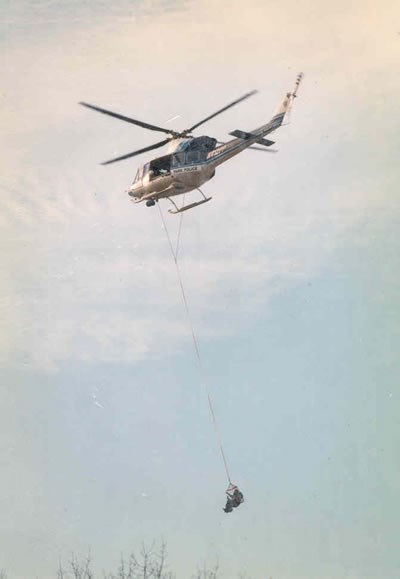
NPS Photo For this reason, swimming and wading are ILLEGAL. These offences are subject to a $200 or more fine, and appearance in federal court or even formal arrest. If you exit the water alive. Think of the costs to your family if you do not! It is most important, STAY OUT of the river and STAY ALIVE. You may not even stick your feet in the water, that puts you at risk of slipping into the river, landing on a rock or hitting your head, and being dragged out by the current. On average the Potomac River is 27 feet deep, and has strong undercurrents below the surface. The average flow rate is 10,000 cubic feet per second. Mather Gorge in Great Falls Park is one of the most dangerous sections on the Potomac. Remember, NO SWIMMING, NO WADING, keep your feet out of the river. Many people have died after entering the Potomac River Gorge, as-well-as slipping and falling in the river along the rocky shorelines in Great Falls Park. Fifty-one percent of all river related injuries in the Potomac River Gorge are fatal. Seventy-two percent of river related incidents are from swimmers, and people wading or slipping off rocks into the river. It is uncommon to have boating accidents in the gorge (not kayaking/canoeing). Some recreational visitors enjoy whitewater boating (kayaking, paddleboarding, or canoeing) on the Potomac River. Kayaking is a specialized sport; it is common to see kayakers running the falls and whitewater paddleboarders surfing the rapids of Mather Gorge downstream. Life Jackets are mandatory for all boaters. Helmets are also required for kayaking. This one and a half mile section of river in Great Falls Park requires at least intermediate skill, and self-rescue training before entering these class 3-5 rapids. Paddlers must use proper equipment to navigate the river and be able to self-rescue during any potential emergency. It is HIGHLY recommended that first time boaters to this area follow these guidelines: Be at least intermediate level; this requires prior whitewater training and experienced self-rescue. Consult local paddlers about this unique river environment. The greater Washington area has plenty options to seek instruction from river guides and outfitters. Track the daily conditions (height gauge and flow rate) of the Potomac River. Know before you go! US Geological Survey, American Whitewater, and others also provide current information on river conditions and river recommendations available on the Internet that all boaters should be aware of. In all water activities, never go alone! Paddling with others adds a significant safety advantage to you. It's always smarter to use the buddy system. Multimedia River Safety Resources Movie: How long can you hold your breath? Park rangers and river rescue personnel talk about what happens in the Potomac when people take risks. Also available in Spanish and Vietnamese. From the Washington Post: an interactive article on river currents and why people drown in the Potomac at Great Falls. There is also a feature article on the factors that cause drowning's, and an interview with a survivor. |
Last updated: May 10, 2024
